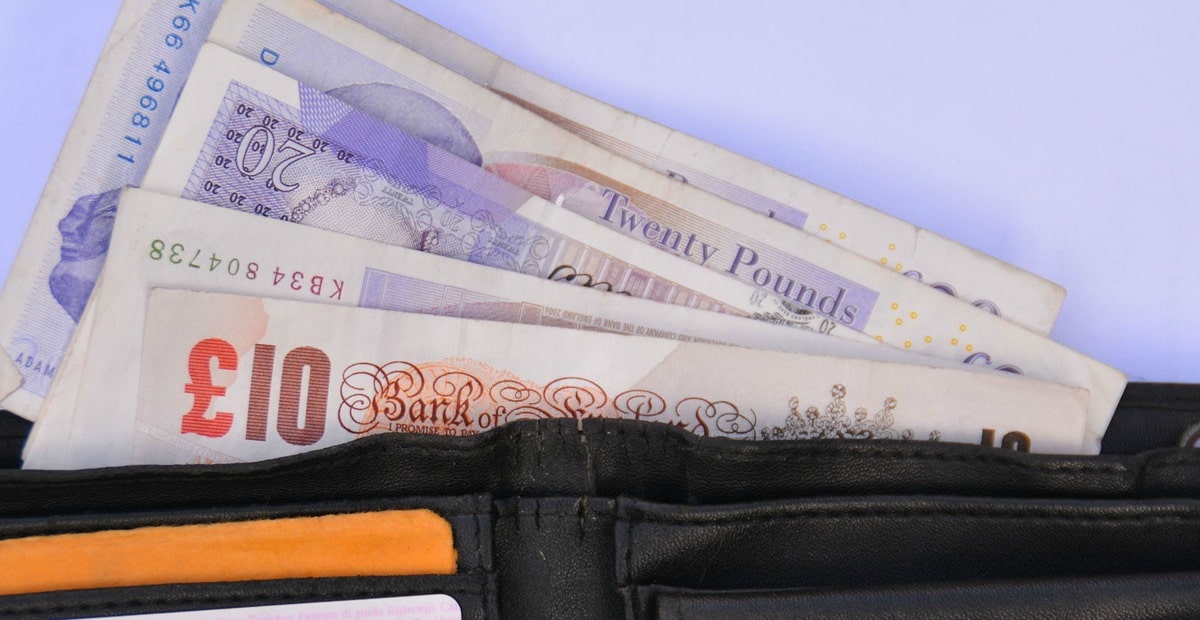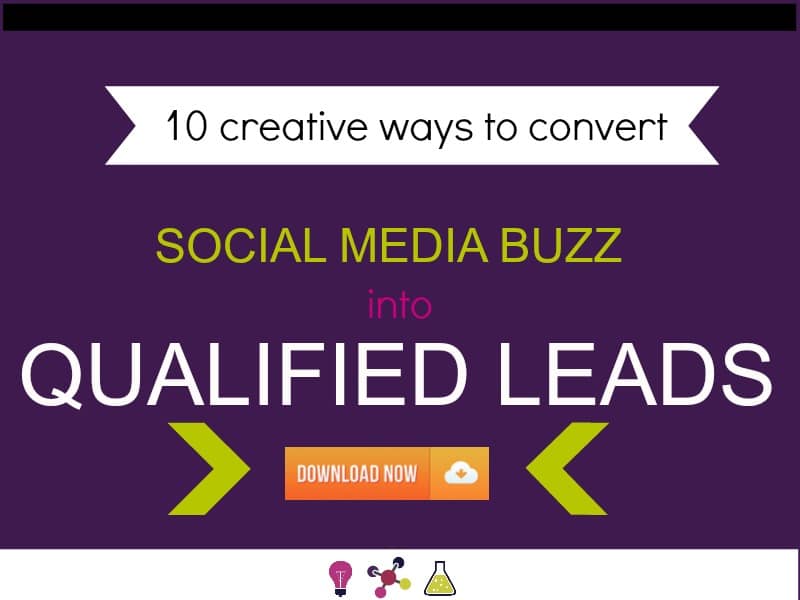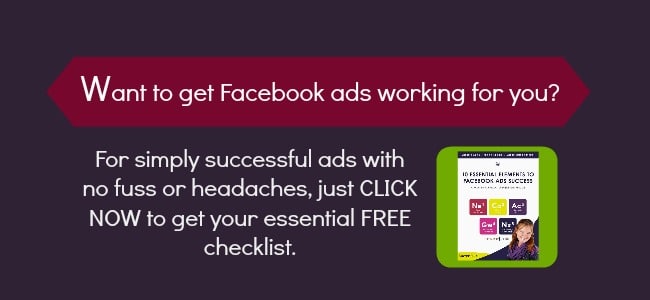 With a little planning, you can reduce your Facebook advertising cost, whilst also ensuring that you get the best possible results from your ads.
With a little planning, you can reduce your Facebook advertising cost, whilst also ensuring that you get the best possible results from your ads.
If you are an expert, coach or service provider, or you are running events, then the best Facebook advertising strategy for you will revolve around using ads to build a list, or database, of people interested in the product or service you offer. You can then educate, nurture and nudge them along the journey from being strangers to buying from you, using email (and also Facebook ads remarketing.) If you’re not already using this strategy then I strongly suggest you start now, whilst Facebook advertising costs are still pretty low.
You can easily build a relevant and engaged database by using Facebook advertising to promote a squeeze or landing page to a targeted audience. Anyone interested in the lead magnet ( free, value-filled guide, checklist, or video) you’re offering, will submit their email details in return for receiving your freebie.
This lead attraction system works like a dream and can make the difference between your business struggling along in a feast-to-famine way, or having interested leads and clients show up like clockwork. However, you may find that you get thrown off course when you come to create your own lead attraction system by two factors:
a. what to offer as a freebie – or lead magnet
Don’t worry – I’ve got you covered on this one – just click on the image below and download my checklist for ideas with pros and cons of each:
b. just how much will Facebook advertising cost?
If I had a penny for every time I get asked about how much Facebook advertising costs to attract leads, or opt-ins in this way …
I kept seeing this question come up again and again, so I went onto Facebook Live and offered an answer, discussing all the factors involved.
You can catch the recording here:
Facebook measures the cost of Facebook advertising for you, by tracking a conversion pixel added to the thank you, or confirmation page, shown to people after they opt-in. However, remember that the Facebook advertising cost recorded will include the cost of getting your audience to see the ad, getting them to click on the ad and then getting them to submit their details, having been taken to your landing page.
Therefore, the Facebook advertising cost per opt-in reflects not only the efficiency of the process to get people to see and click on your ads, but also the attractiveness and efficacy of your landing page and also your opt-in form.
You can track the contribution made by your landing page and opt-in process to the success (or otherwise!) of your campaign, by checking the conversion rate (ie. no. of opt-ins/ total no. of people who visited the page) for your landing page. Separating this from the overall picture will allow you to fully optimise the process and so reduce your Facebook advertising cost.
Then you can turn your attention to the Facebook ads themselves.
(To get your hands on a free checklist, to print out and keep beside you as you set up your ads – just click here, or on the image below.)
Pay attention to the following 6 factors, as they are key to not only minimising your Facebook advertising cost, but will also ensure that your ads deliver the results you want:
- How well you know the people you want to attract
If you know your target audience really well, you will understand their daily challenges, what mattes to them, how they feel about the problem/ opportunity you help with and how they talk about it. All this knowledge will enable you to craft an ad that’s highly compelling and relevant, with an image that immediately attracts attention from the right people. This means that your audience is likely to take action when they see your ad, rather than ignore it. This means that you will get maximum return on your Facebook advertising cost.
2. How well you have targeted your ads
Knowing your audience really well also means that you will be able to target your ad very effectively using Facebook’s many, many filters. One of the biggest reasons for Facebook ads not giving the results business owners want or expect, is that the offer (in this case the free gift or download) made in the ad just doesn’t match the audience it is offered to, so they are not compelled to act (opt-in). Getting the targeting right will mean the difference between a chunky vs. a leaner profile Facebook advertising cost.
3. How much testing you have done
It is very rare to hit on a winning combination of ad image, copy and targeting all at the same time, in the first ad that you run. Be prepared to run multiple variations on a theme (changing only one factor at a time) until you come across one or more combinations that give you results you’re delighted with! (For one client, I have run over 40 different ads and only now have we landed on a combination that gives great results in terms of cost per opt-in!)
4. How much you have stopped and started ads
If you keep stopping and re-starting ad sets and ads, then Facebook loses the ‘history’ it builds up around each campaign, which includes recognising what a conversion looks like. This data is used to optimise for conversions, which usually brings the cost down. Try to stop and start ads and ad sets as little as possible, if you want to reduce your Facebook advertising cost.
5. Other external factors
If your business is in a highly competitive niche, where many others will be bidding to show their ads to the same people, your Facebook advertising costs will be relatively high.
Similarly, if you are advertising at any of the ‘peak’ times on the calendar, such as the run up to Christmas, expect to be paying top whack for Facebook ads!
6. How well-established you are on social networks and/ or your blog.
This is an important factor, but one that very often gets overlooked! If you already have an established presence, it’s likely that some people who see your ads might already have come across you online, or might have heard of you from their friends or contacts.
In this case, they will be likely to take action having seen an ad of yours only once or twice, whereas others who have never met you might not take action until they have seen your ad several times.
Obviously, the quicker and easier it is to attract a response from your audience, then the lower your Facebook advertising cost will be.
At the end of the day, the answer to ‘how much should I pay for an opt-in using Facebook ads?’ or ‘what should my Facebook advertising cost be?’ comes down to your business.
If you know that you can spend £x to get a lead and still achieve a good ROI, and your cost to get a lead using Facebook ads in this way is under x, then go for it!
If you know that 10% of the people who opt in will each spend on average £3,000 with you, based on analysis of business results, then you know that you can afford to spend a lot to get an opt-in.
However, if only 1% of your opt-ins spends only on average £2 with you, then you have some pretty tight margins and you can’t afford to pay much to get a lead in this way.
Remember, though, that your Facebook ads may bring you more intangible benefits such as JV partners or speaking gigs, due to increased visibility. What would the ROI be on that Facebook advertising cost?
In summary –think about the cost to achieve an opt-in using Facebook ads as a sum of the parts and compare this cost to the results achieved in your business as a result.
Only then will you have a solid foundation on which to base calculations around the ROI of your Facebook campaigns.
If you want to make sure you get results every time from your Facebook ads, then I’d love you to get your free , printable checklist here`:http://www.bramblebuzz.co.uk/facebook-ads-success-essentials
Oh – and please let me know in the comments below if you’re using this strategy for your Facebook ads – and if so, how it’s working for you!



Totally love the tips. Thanks for the help.